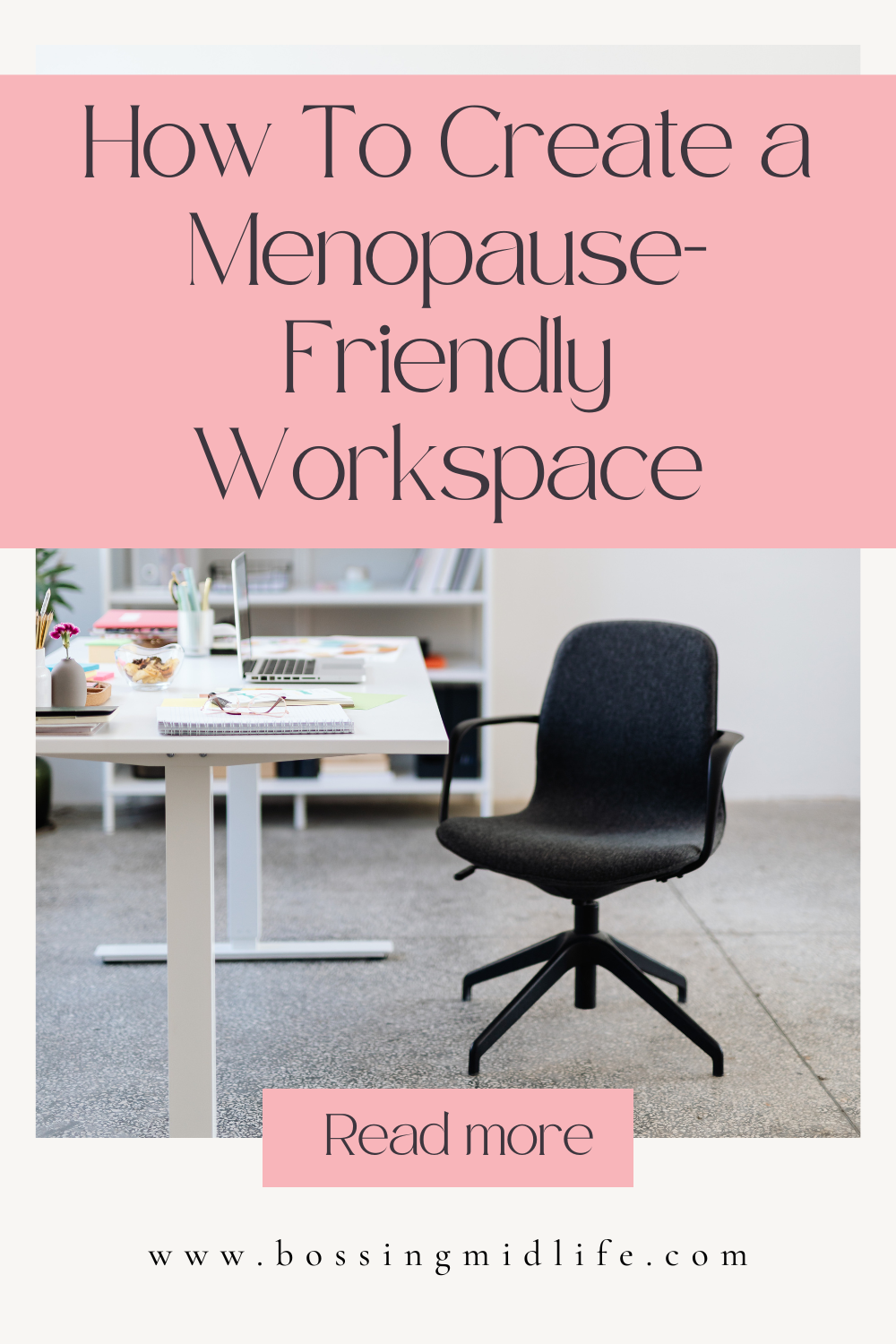How To Create a Menopause-Friendly Workspace
Menopause can bring physical and mental changes that make workdays more challenging, especially for midlife businesswomen and entrepreneurs. Aches, fatigue, and general discomfort can interfere with focus and productivity. Fortunately, a few thoughtful changes to your workspace can make a big difference.
Here are a few considerations to make to create a menopause-friendly work environment that supports your body and mind.
Support Your Body with the Right Chair
During menopause, joint pain or stiffness can make long hours at your desk uncomfortable. A supportive chair becomes even more critical. Adjust your chair height so your feet rest flat on the floor, and your knees are at a 90-degree angle to reduce pressure on your hips and lower back. If you’re experiencing lower back discomfort, look for a chair with built-in lumbar support or add a cushion to maintain the natural curve of your spine. Relaxed shoulders can reduce tension, so ensure armrests are positioned appropriately.
Position Your Screen for Comfort
Neck and shoulder tension is common during menopause, especially when paired with the natural loss of muscle elasticity that can occur with age. To prevent strain, raise your monitor or laptop so the screen is at eye level. Keeping the screen at arm’s length also helps prevent eye strain, which can be exacerbated by hormonal changes that affect vision or cause dry eyes.
Incorporate Movement
Menopause can increase joint stiffness, making movement breaks essential. Alternating between sitting and standing with a height-adjustable desk can reduce stiffness and improve circulation. Setting a timer to stretch or move every 30–60 minutes can help with joint pain and boost your energy levels, especially if you’re battling menopausal fatigue. If you prefer sitting, consider using a stability ball chair for part of the day to engage your core and support better posture.
Add Stress-Reducing Touches
Mood changes and increased stress levels are common during menopause, so creating a calming workspace can help you feel more balanced. Adding a plant to your desk can reduce stress and improve air quality, while soft lighting or a desk lamp can minimise the harsh glare that might aggravate headaches. Hormonal changes can heighten your sensitivity to smells, so choose calming scents like lavender or chamomile in a diffuser to help you relax without being overwhelming.
Keep It Organised
Brain fog and forgetfulness can make focusing harder, so an organised workspace is a must. Keeping only essential items on your desk can help you stay focused and reduce visual clutter that might distract you. Storage solutions like baskets or filing systems can make it easier to find what you need, reducing frustration. Applying these same principles to your digital workspace can also save you time and energy, helping you stay productive even when your brain feels a bit sluggish.
Making these small but meaningful adjustments to your workspace is about more than physical comfort. It’s about empowering yourself to work at your best, even when menopause symptoms are challenging.
Want extra support? I offer a 121 call - find out more here. Or maybe I can help create a personalised Self Employed Menopause Policy for you.


